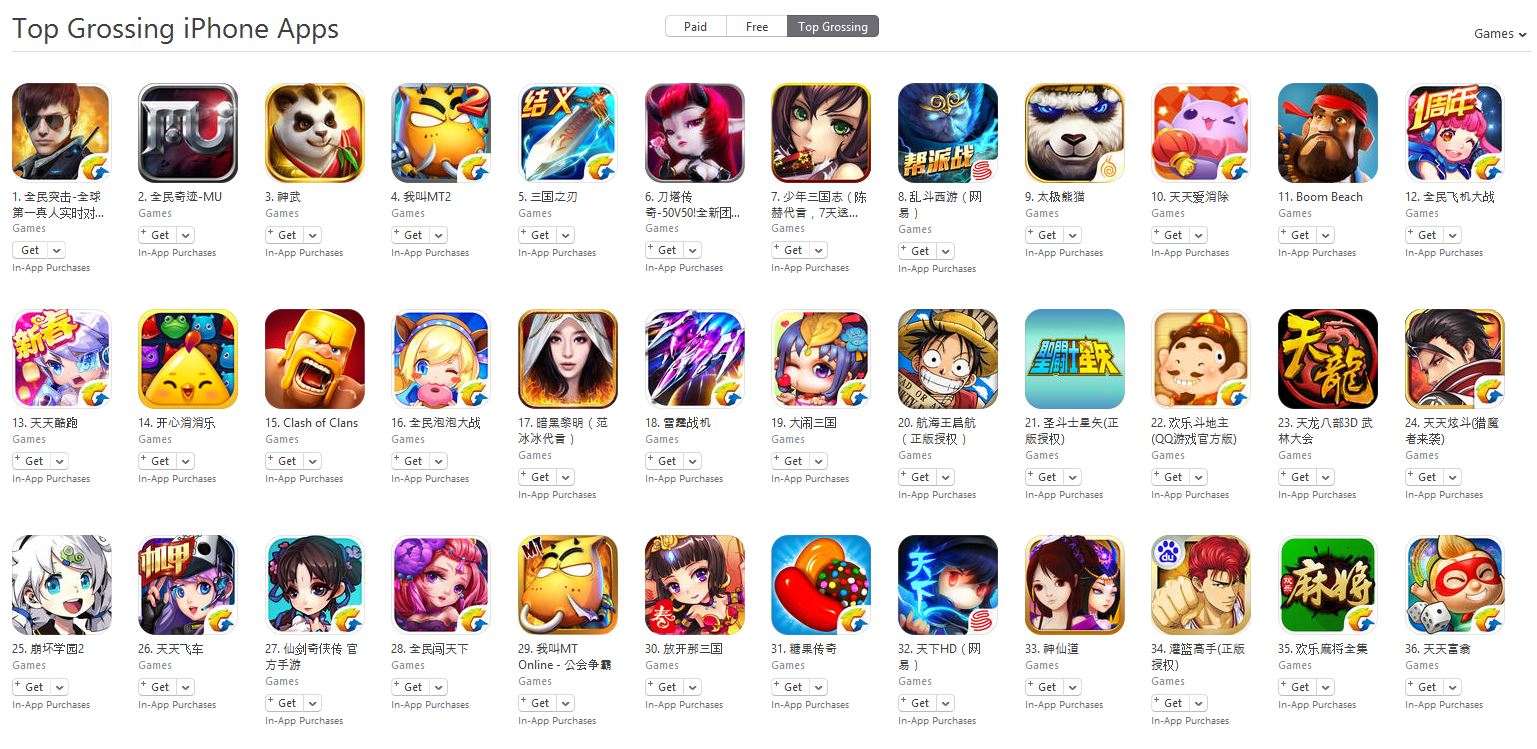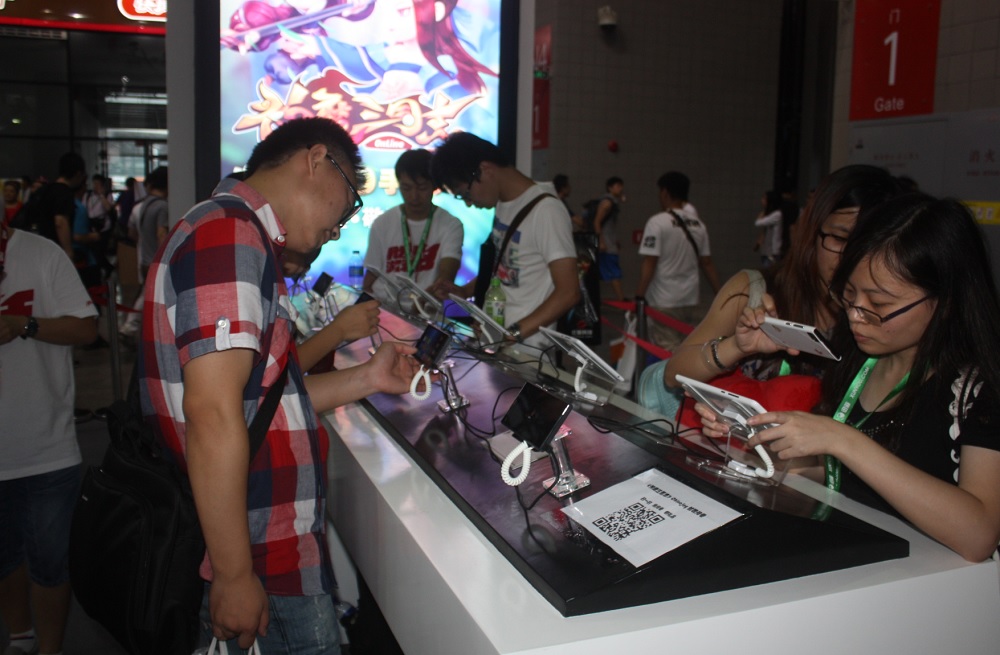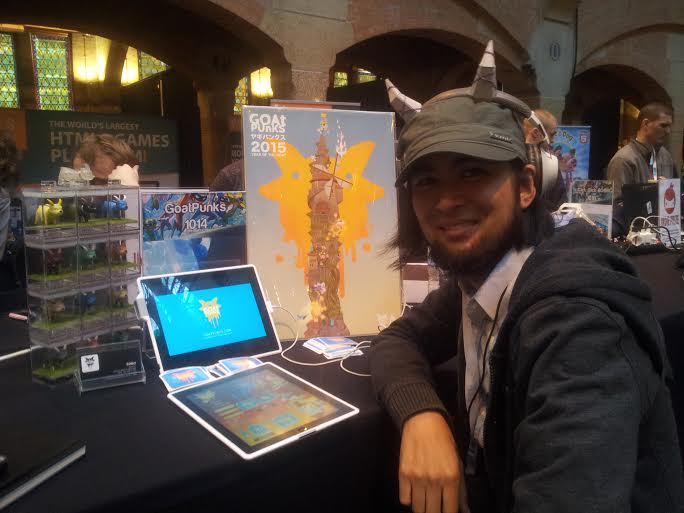The mobile spend
Chinese gamers spend money. A recent Niko Partners study revealed that 38 percent of them will spend on mobile games. That’s a surprisingly high number given the relatively low wages compared to the West, but mobile gaming is actually a great, affordable source of entertainment in China.
“There are not many forms of entertainment available, especially to those who live in fourth-tier cities that make maybe, let’s say, $300 a month,” said Heathershaw.
Movie tickets can cost as much as $25 in Beijing, and Chinese bars are pricey compared to salaries. “Instead you have a mobile game where the in-app purchase could be 30 cents or a few dollars,” said Heathershaw. “It’s one of the cheaper forms of entertainment a Chinese person can find.”
China has the fastest-growing economy in the world, and smartphone use is growing rapidly — smartphone penetration is currently around 47 percent — but it’s not a great source of advertising revenue.
“The value of your traffic is not as valuable as it might be in the West, so advertisers are not willing to spend as much money on traffic in China as they are overseas,” said Heathershaw.
“You have to make up your revenue elsewhere, and luckily Chinese people are willing to spend money in games.”
The popular messaging service WeChat — with over 438 million users — is a big factor in this willingness to spend, according to Junde Yu, the Asia-Pacific vice president at mobile analytics firm App Annie.
“They first pushed casual games and people started playing … even though they are not gamers,” Yu told The Next Web. “And we’re talking about masses here. Because WeChat games are so easy to play and so easy to pick up, after a while they get hooked on [them] and start to pay.
“All these people have never paid for mobile content before, but once they make the first payment, that’s it. After the first payment, they start to pay a lot more. WeChat brings them through the floodgate, opens the floodgate for them: Make the first payment, and after that, you’re likely to pay more.”
Local connections
Ironsource’s Beijing office is staffed entirely by Chinese nationals. It’s no accident.
“When we opened the office, we went through a lot of thinking [of] how to do it,” said Omri Halamish. “At the end of the day, if you want to make it in China, you need to do it with local people. It’s hard, but that’s the only way to crack China.”
Publishing a game follows the same rule — if you want to really succeed, you need a local partner.
“Once you develop the right game with the right partners, there is money to be made,” said Halamish.
William Heathershaw points to big examples of Western games that found success in China. “If you look at successful examples like Subway Surfers, the Angry Birds franchise, and Fruit Ninja, they all have local partners.”
The problem is finding those local partners that are willing to take on your game and invest the time in localizing, publishing, and promoting it properly.
“We aim to sign around two games per month,” said Heathershaw, “so not every developer that wants to go to China [with us] can go to China. That’s the real issue.”
Heathershaw curates SkyMobi’s growing collection of Chinese offerings, but he has to be sure the games he chooses have a high chance of success. “I love to talk to developers,” he said. “A lot of them have passionate love for their game. Unfortunately it’s not always the right fit for this market.”
But he insists that it’s a market every company should be interested in: “It would make sense that every company has an interest in the Chinese market. It’s just the approach and how can they do it.”
Accidental success
Just because a game isn’t designed with the Chinese audience in mind, that doesn’t mean it can’t find success there. There is the odd, encouraging story of accidental success.
I met Antonio Alberto Santiago, an Australian designer, animator, and developer, at Casual Connect. His asynchronous multiplayer iOS game, Goat Punks, found accidental success in China, without any localization or translation.
Goat Punks is a free game with in-app purchases — you can buy cosmetic items and weapons for your goat with real money — and Santiago told me most of his sales come from China. Unfortunately he can’t understand any of the reviews the Chinese players are leaving, as “they’re all in Chinese — I don’t know what they’re saying.”
While Goats Punks only has around 20,000 active players and isn’t generating a huge amount of income, it’s interesting to see the small success you can have in the Chinese market with zero marketing and localization.
So what’s the key to Goat Punks’ unexpected popularity? “A Chinese girl was saying because it’s cute and stuff,” said the laid-back Santiago. “The style.”
Santiago’s started making 3D-printed goats inspired by the game and putting them in little clear plastic boxes that he found in a local store. It’s a neat throw-back to his design background, and I couldn’t help thinking that his Goat Punks brand could go huge in China if he wanted the success a little more.
“It’s all just a test for me,” he said nonchalantly. “I made a game: ‘Oh, that’s cool.’ I made some toys for it: ‘Oh, that’s cool.’ It’s all just an experiment in how far I can push things.”
And that’s exactly what the mobile push into China feels like right now: an experiment in how to find success in this almost alien market. But done right, it’s an experiment that can pay off.
VentureBeat's mission is to be a digital town square for technical decision-makers to gain knowledge about transformative enterprise technology and transact. Learn More




